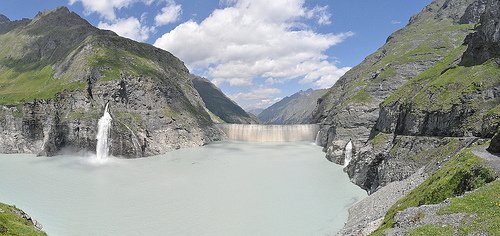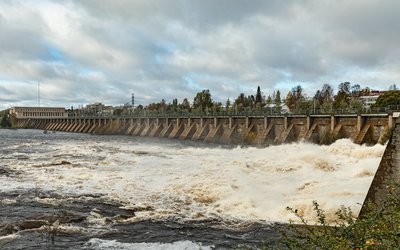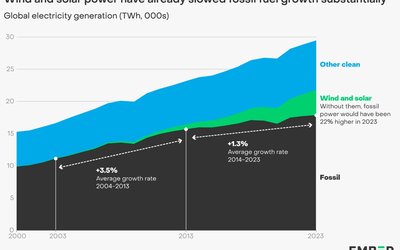
In Austria and Switzerland hydropower accounts for more than 50% of the national electrical power production. Water resources in mountain regions are particularly sensitive to climatic forcing as glacier retreat is already affecting hydropower production across the Alps. This is particularly the case in Switzerland, where reservoirs are frequently glacier fed.
The impact of climate change on hydropower production in the Swiss Alps during the 21st century has been assessed by combining climate projections, dynamic glacier modeling, and hydrological modeling accounting for water storage in reservoirs and river diversion. Climate projections are based on seven different combinations of global and regional climate models, and the A1B scenario (rapid economic growth, quick spreading of new and efficient technologies, and a global population that reaches 9 billion by the midcentury and then gradually declines).
The main conclusions are:
- Glaciers will continuously decrease until they almost disappear by the end of the 21st century. While temperature and global radiation are expected to increase throughout the entire year, it is difficult to define distinct trends in precipitation patterns.
- Based on the presented projections, total runoff generation for hydropower production will decrease during the 21st century by about one third due to the massive retreat of the glaciers. The reduction of ice melt will not be compensated by the potential increase of precipitation.
- In the future the melt season will start earlier in the year, but in the second half of the melt season water runoff will be drastically reduced because of the glacier retreat and the advanced snow melt in the spring months.
- By midcentury, high water events due to heavy precipitation events are expected to become more frequent than today, leading to an increase of water loss due to overflow at some water intakes during fall. While today most water is lost during strong melt periods in summer, the future dynamics of hydrology will lead to overflows in particular during heavy precipitation events in fall. This represents new challenges for hydropower companies to adapt their infrastructures accordingly.
- While the increased snow and ice melt in spring will lead to enhanced runoff in spring, runoff in the second half of the year will be significantly lower. Subsequently, this seasonal shift will impact hydropower production, which is expected to decrease by over half by the end of the century during the summer months.
- The seasonal shift of the hydrological cycle and the reduced ice melt generation will very likely force hydropower companies to adapt new water management strategies. The new strategies have to take into account that ice melt in summer will be drastically reduced, but the frequency of heavy precipitation events during fall will increase. Accordingly, the current practice of hydropower companies, of producing maximum energy during winter and relying on ice melt to fill the reservoirs, might be jeopardized by the end of the century.
Source: Finger et al., 2012. Water Resources Research 48.
Photo: Andrew Last (www.flickr.com)








